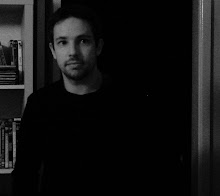Loplop présente, 1931
Loplop présente... les vipères, 1931
Loplop aux papillons, c.1932
Max humaine et papillons pétrefiés, 1931
Le facteur Cheval, 1932
Du verre, 1932
Loplop présente, 1931
Matin et soir, 1930
Anthropomorphic figure, 1930
Two anthropomorphic figures, 1930
Figure humaine, c.1930
Loplop présente Loplop, 1930
Figure humaine, 1931
Loplop présente une jeune fille, 1930
... Max Ernst always defended himself against interpretations of his work. In so doing he distanced himself from pictures that present - as Dalí in his concurrent writings said they should - a completely closed system of superimposed images each of which, however, can be read for itself. Max Ernst's own pictures refuse to yield to compulsive interpretation, paranoiac-critical or otherwise. Here we might again cite that statement in the Leonardo essay - "that in many places it becomes hard to see where Anne stops and Mary begins" - this time as a self-commentary on the part of Max Ernst. What it expresses here is the relation between encoding and decoding, ambiguity and clarity.
With this, Max Ernst's critical reading of Freud takes on a fabulous significance. We have seen that Max Ernst was fascinated by Freud's acumen, his capacity for mental association, his interpretive drive. These corresponded to a deep instinct of his own. I quoted at the beginning from the Biographical Notes what he had remarked under the year 1906 - that a kind of mania to explain had possessed him to see the death of his favourite bird, Hornebom, in causal relation to the birth of his sister Loni. The shock had gone deep, he said, adding:
Yet in the boy's mind there remains a voluntary if irrational confounding of the images of of human beings with birds and other creatures; and this is reflected in the emblems of his art.
Werner Spies, Loplop: The Artist's Other Self









































.jpg)


















No comments:
Post a Comment